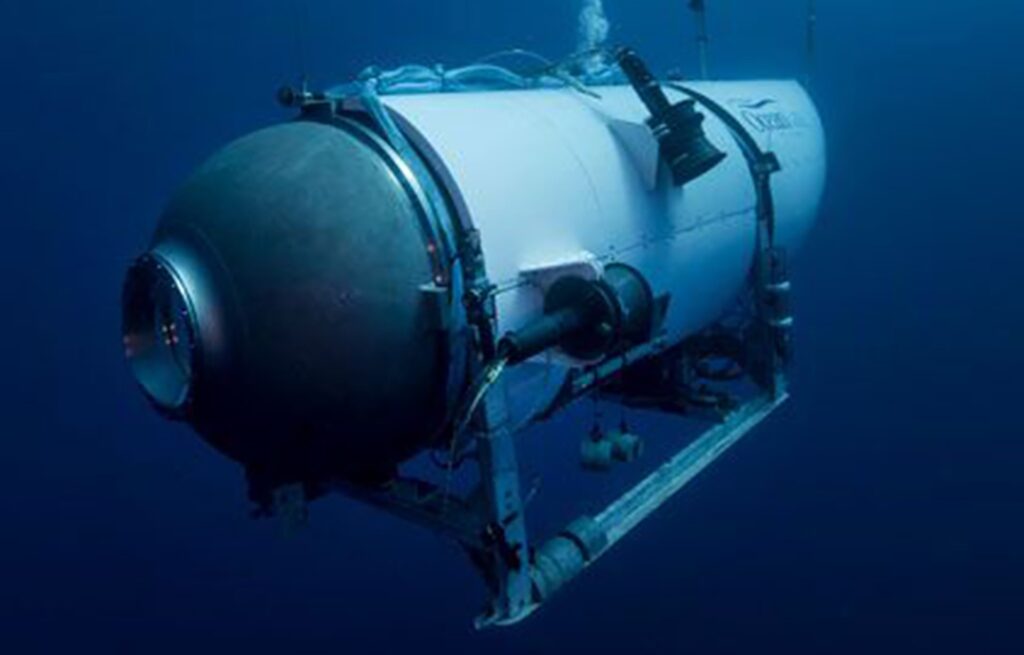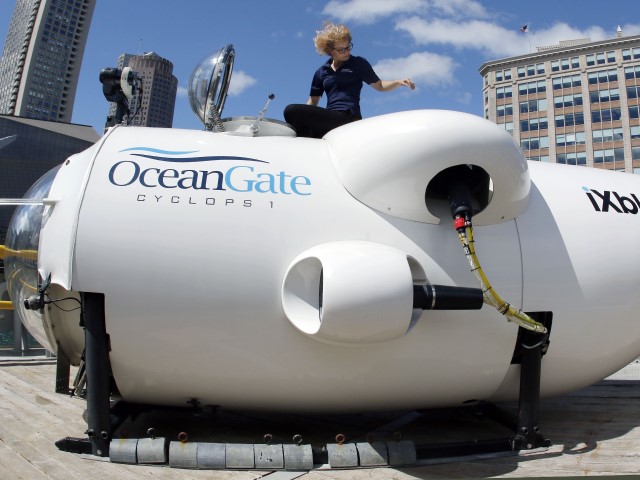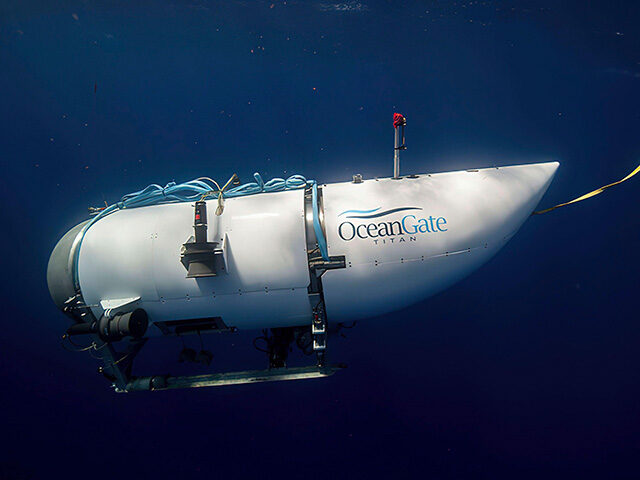As the search for the OceanGate submersible continues after it went missing during a tourist deep-sea expedition to the ill-fated Titanic, reports have raised questions about the safety standards that were maintained.
Various outlets have since noted that the OceanGate did not have the Titan submersible inspected by proper authorities. In a 2019 blog titled “Why Isn’t Titan Classified?” OceanGate argued that the submersible had innovative features outside of current class rating standards.

This undated photo provided by OceanGate Expeditions in June 2021 shows the company’s Titan submersible. (OceanGate Expeditions via AP)
“By definition, innovation is outside of an already accepted system,” the blog said. “However, this does not mean that OceanGate does meet standards where they apply, but it does mean that innovation often falls outside of the existing industry paradigm.”
“While classing agencies are willing to pursue the certification of new and innovative designs and ideas, they often have a multi-year approval cycle due to a lack of pre-existing standards, especially, for example, in the case of many of OceanGate’s innovations, such as carbon fiber pressure vessels and a real-time (RTM) hull health monitoring system,” it continued. “Bringing an outside entity up to speed on every innovation before it is put into real-world testing is anathema to rapid innovation.”
It cited Space X, Blue Origin, and Virgin Galactic as examples of this kind of innovation. The blog further argued that expeditions rarely go wrong due to vessel failure and more due to operator failure.

Isabel Johnson, a submarine pilot in training, sits atop the submersible OceanGate Cyclops 1 during a presentation of findings on Monday, June 13, 2016, in Boston, after its undersea exploration of the wreck of the ocean liner SS Andrea Doria in the Atlantic Ocean near Nantucket. (Bill Sikes/AP)
“By itself, classing is not sufficient to ensure safety. In part this is because classing does not properly assess the operational factors are vital for ensuring a safe dive, and because classing assessments are done annually (at best) and do not ensure that the operator follows procedures or processes that are the key to conducting safe dive operations,” it concluded.
Video has since surfaced of OceanGate CEO Stockton Rush, one of the people on board the missing sub, talking about his team selection in which he specifically said that he wanted to hire young people for “inspirational” purposes.
“When I started the business, one of the things you’ll find, there are other sub operators out there, but they typically have gentlemen who are ex-military submariners, and you’ll see a whole bunch of 50-year-old white guys. I wanted our team to be younger, to be inspirational,” he told Teledyne Marine.
The comments can be heard in the video below at the 27:00 mark.
According to CBS News, former employee David Lochridge raised concerns about the submersible back in 2018, which resulted in his firing and an eventual lawsuit.
In his complaint, filed in the U.S. District Court for the Western District of Washington, Lochridge alleged he had raised concerns about the safety of the Titan with OceanGate and advised the company to conduct more testing of the vessel’s hull. Lochridge said he had disagreed with his employer about the best way to test the safety of the sub and that he objected to OceanGate’s decision to perform dives without “non-destructive testing to prove its integrity.”
The U.S. Coast Guard confirmed on Tuesday that the vessel has only 40 hours left of oxygen, assuming that the hull maintained integrity and the ship’s passengers have survived being 2.5 miles underwater for well over 24 hours. Some good news emerged late Tuesday when sonar technology began to detect banging noises in the vicinity of the Titanic wreckage.

COMMENTS
Please let us know if you're having issues with commenting.